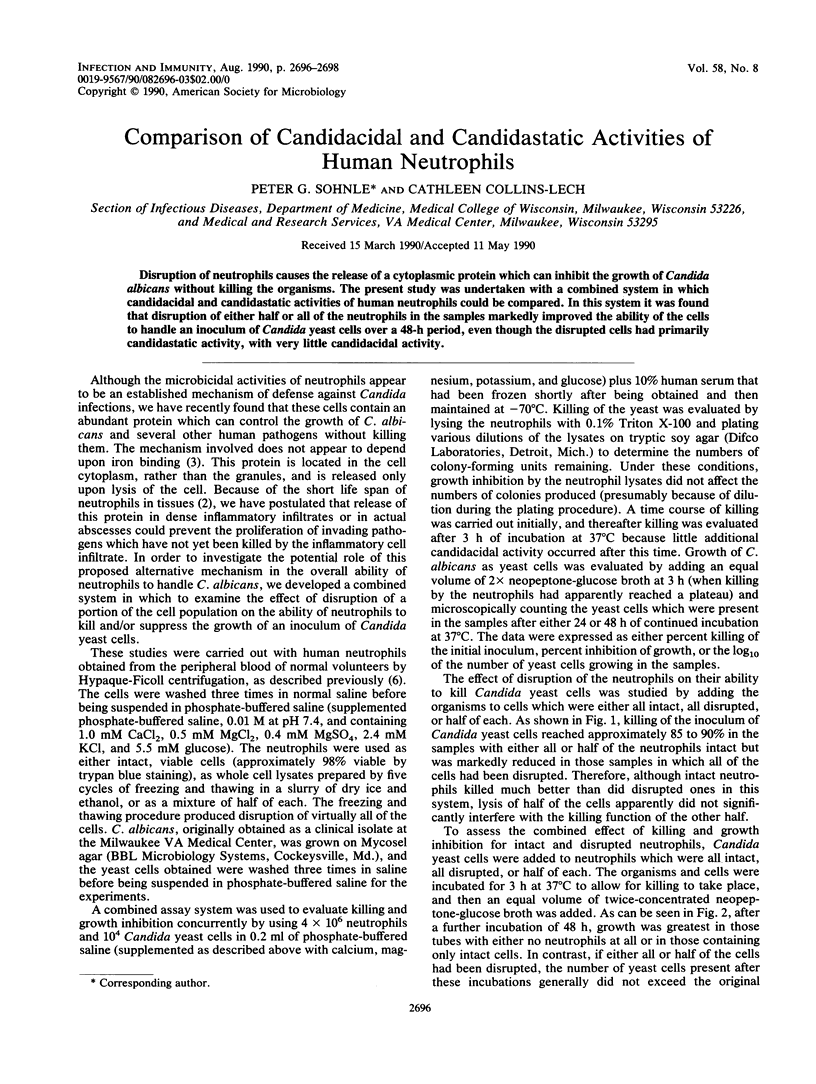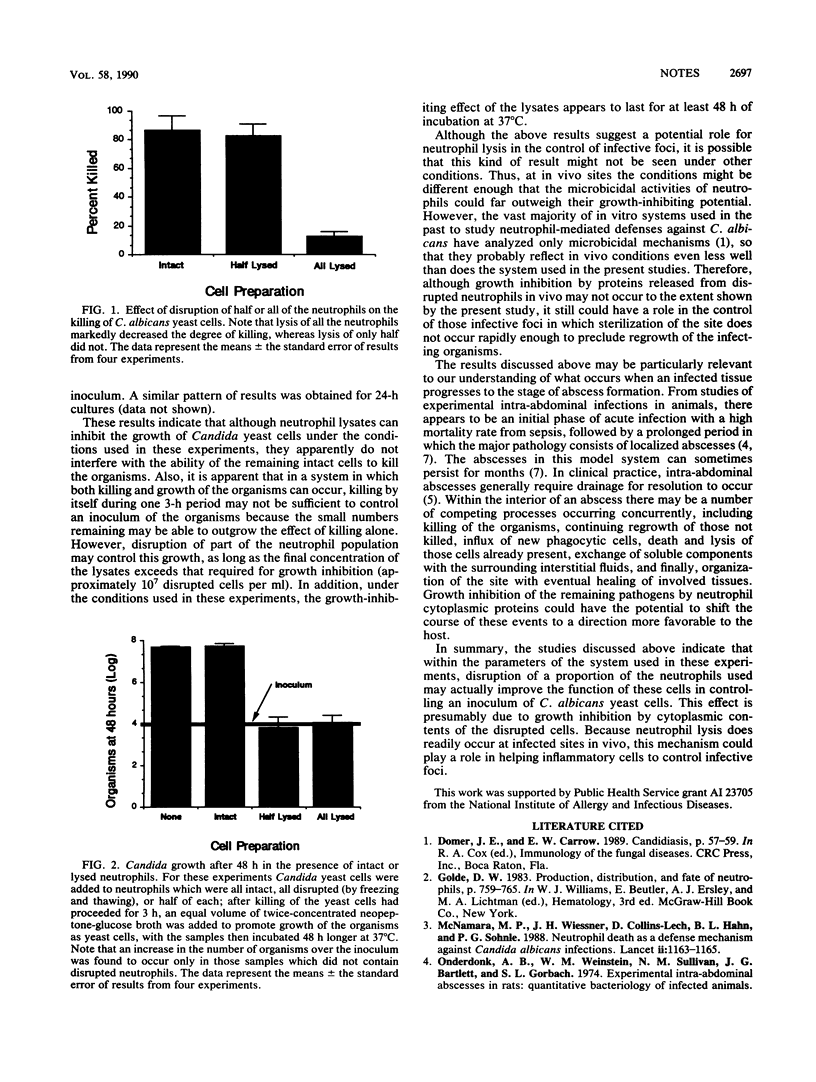Abstract
Disruption of neutrophils causes the release of a cytoplasmic protein which can inhibit the growth of Candida albicans without killing the organisms. The present study was undertaken with a combined system in which candidacidal and candidastatic activities of human neutrophils could be compared. In this system it was found that disruption of either half or all of the neutrophils in the samples markedly improved the ability of the cells to handle an inoculum of Candida yeast cells over a 48-h period, even though the disrupted cells had primarily candidastatic activity, with very little candidacidal activity.
Full text
PDF


Selected References
These references are in PubMed. This may not be the complete list of references from this article.
- McNamara M. P., Wiessner J. H., Collins-Lech C., Hahn B. L., Sohnle P. G. Neutrophil death as a defence mechanism against Candida albicans infections. Lancet. 1988 Nov 19;2(8621):1163–1165. doi: 10.1016/s0140-6736(88)90234-6. [DOI] [PubMed] [Google Scholar]
- Weinstein W. M., Onderdonk A. B., Bartlett J. G., Gorbach S. L. Experimental intra-abdominal abscesses in rats: development of an experimental model. Infect Immun. 1974 Dec;10(6):1250–1255. doi: 10.1128/iai.10.6.1250-1255.1974. [DOI] [PMC free article] [PubMed] [Google Scholar]


